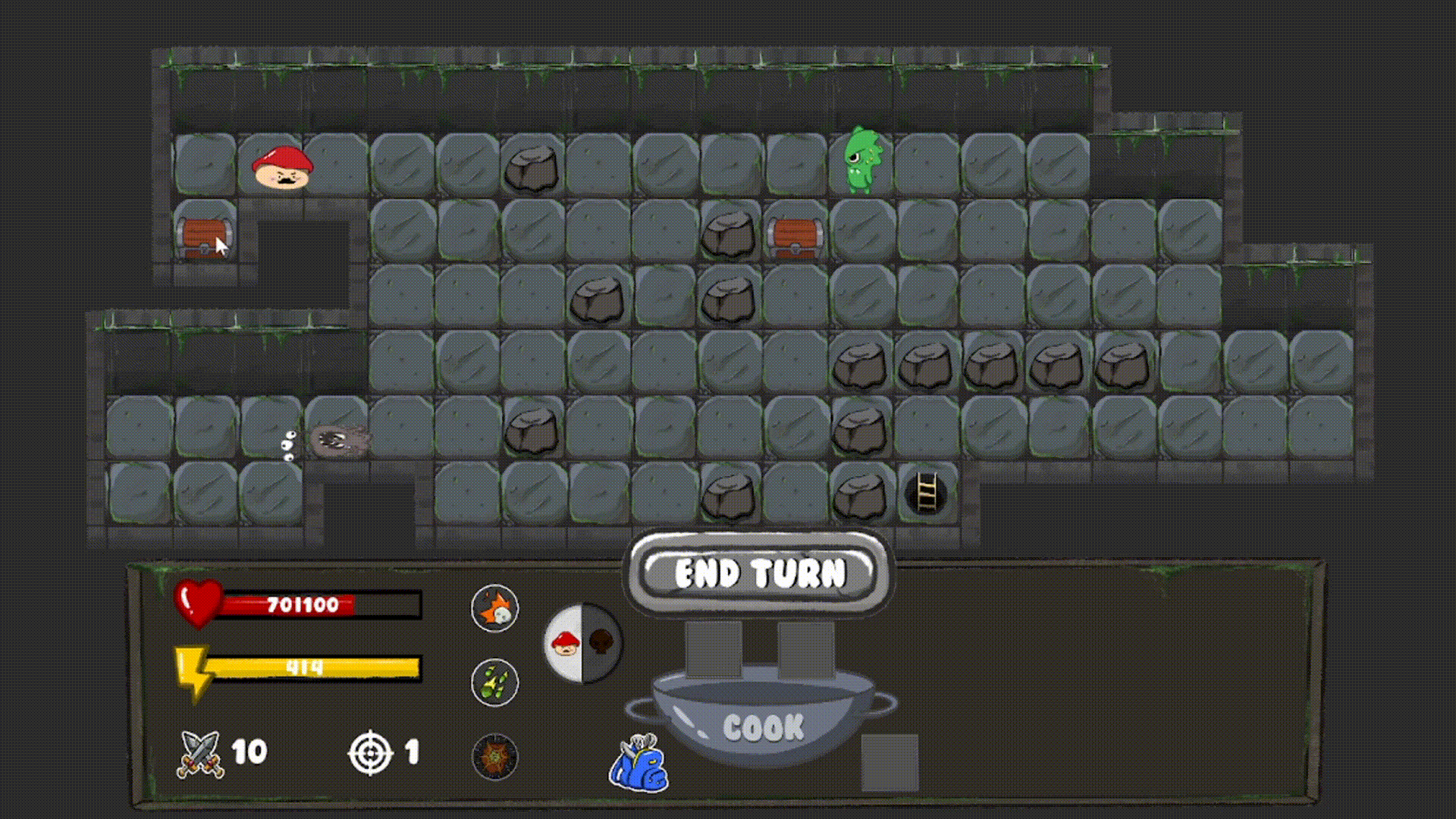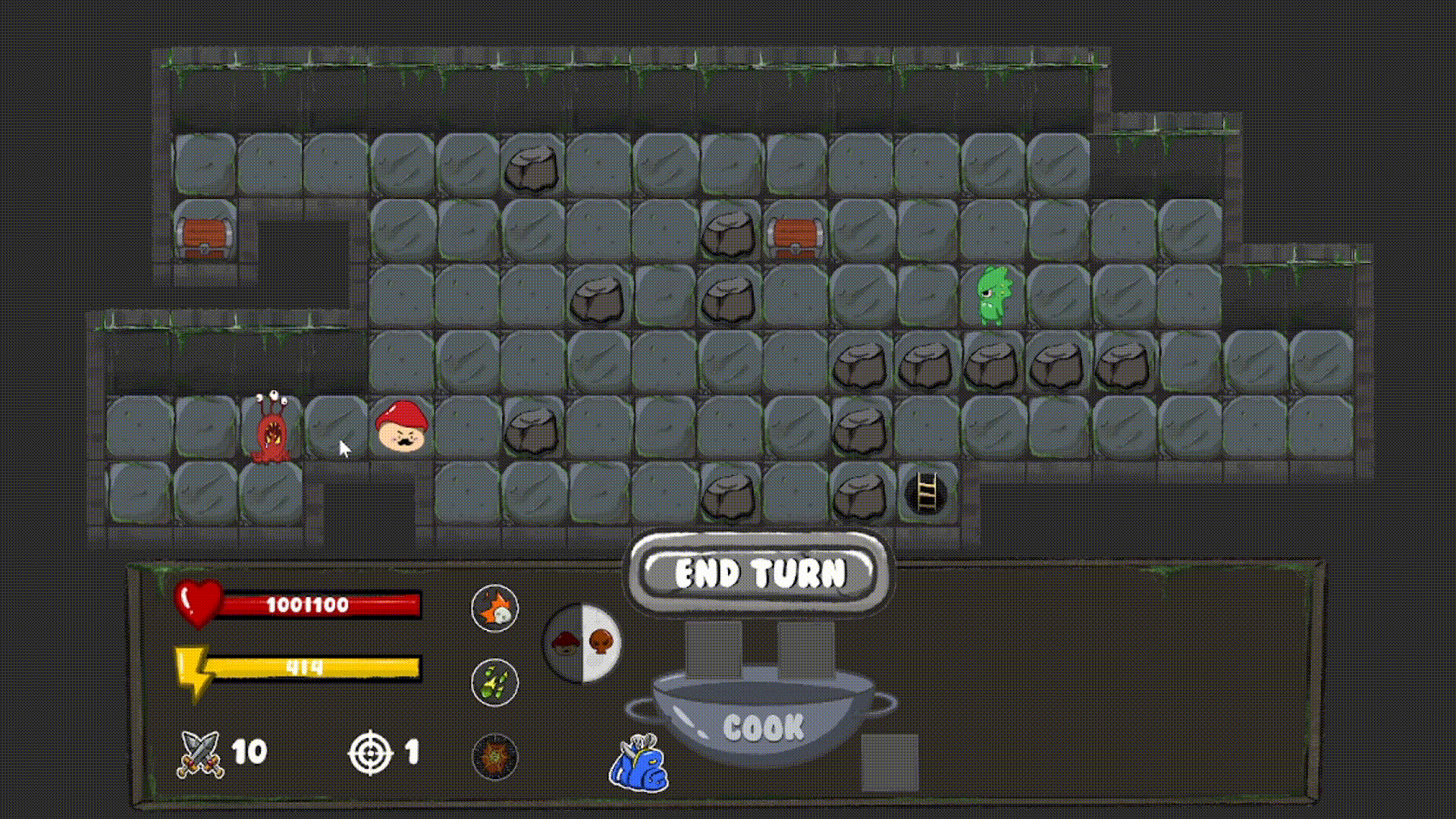SHROOMY DOOMY
Role: Programmer / Designer, Debugging Champion
Shroomy Doomy is a 2D strategy adventure developed by Team Fruitloops. Built on a custom engine from scratch, the game blends tile-based combat with cooking mechanics inspired by “Dungeon Meshi.” Players take on the role of a mushroom father venturing into a dungeon to rescue his seven children, using monster parts as ingredients to cook powerful dishes that grant upgrades.
Game Trailer
My Roles
Implemented engine debugging and system fixes (using ImGui overlays) to keep builds stable and improve development workflow.
Assisted in programming gameplay mechanics for combat and cooking.
Designed gameplay flow and helped refine balance between strategy and upgrades.
Collaborated with teammates across programming, design, and art to ship a complete playable demo.
Gameplay Mechanics Showcase
Cooking and Inventory Mechanics
Chest Mechanics
Balancing Gamplay
Tools Used
Custom C++ Engine - FruitLoops Engine
(developed by Team Fruitloops)
C++ for gameplay programming (core mechanics, recipes, and level logic).
Alpha Engine as the custom school-provided engine to build the game.
GitHub for version control
Custom Level Editor Showcase
Development
The project was developed in two major phases:
Engine Development
Built from scratch with rendering, collision, input, and state management systems.
Flexible enough to support tile-based logic and cooking mechanics.
Game Implementation
Added dungeon levels, enemy AI, and cooking upgrade systems.
Designed combat pacing and resource management loops to make battles tactical.
Fruitloops Engine
Takeaways
Shroomy Doomy was both a technical and creative milestone. On the technical side, I gained hands-on experience with engine-level programming — from implementing gameplay mechanics to building real-time debug tools with ImGui. Working this close to the engine taught me how fragile frameworks can be and why disciplined debugging and clear tooling are essential for stability.
On the creative side, I contributed to about half of the gameplay mechanics, including the tile-based combat loop and cooking upgrade system. Balancing these systems reinforced how mechanics and story can support each other — in this case, turning the mushroom father’s rescue quest into a strategy experience that feels both tactical and thematic.
As a team project, it highlighted the importance of collaboration and communication across different disciplines (programming, art, design, and production). Our biggest lessons came from missed planning and documentation, which reminded me that scheduling and polish time are just as important as coding features.
This project left me with a stronger foundation in both engine programming and gameplay design, and a deeper appreciation for the teamwork and planning that bring complex games to life.





